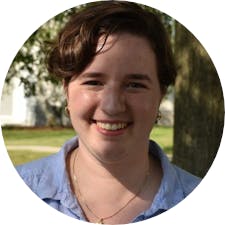The Faculty and Staff section focuses on increasing hiring equity, training new and existing faculty and staff in DEI practices, and building community among new hires to increase retention. Many view it as an important first step in an ongoing process that requires much deeper and continual institutional change.
Of the 11 strategies included in the section, 10 have been completed or involve ongoing programs that are underway, although two programs have been temporarily put on hold because of the pandemic. Only one strategy, the term for which begins this year, is still in development.
HIRING
One of the major pillars of the section is hiring more BIPOC faculty and staff and those from other “historically underrepresented groups.”
The college has historically struggled to hire a more diverse staff because most are recruited from the overwhelmingly white communities surrounding Middlebury, according to Chief Diversity Officer Miguel Fernández. Almost 93% of Addison County residents are white.
Resistance to diversifying the faculty body often comes from the perception of diversity and qualifications being opposing qualities, according to Associate Professor of Political Science Kemi Fuentes-George.
“You tend to see a lot of language about [how] what we need are the most qualified people, and that usually gets taken to be an argument against seeking diversity,” he said. “There's this kind of equation of, if you're orienting around a diversity hire, by definition, you're not seeking qualified people.”
Of the 329 current faculty members, 57, or 17%, identify as belonging to a minority ethnic or racial group, according to Dean of Faculty Sujata Moorti.
While there is a formal hiring freeze for faculty and staff, the college is filling limited positions that were planned before the pandemic or are needed on an urgent basis. Faculty and staff search committees now receive DEI training (Strategy #3 and #4), and job candidates are asked to include their own experience with inclusive practices in their application as a measure to assess their “multicultural competence” (Strategy #5).
New employee orientations now include workshops on diversity, equity and inclusion, though the college has not offered staff orientations — which normally happen periodically as opposed to the the once-a-year faculty orientation — during the hiring freeze (Strategy #6), according to Director of Education for Equity and Inclusion Renee Wells.
The college has also approved a staff position to help with partner inclusion, and Moorti is currently working with the Educational Affairs Committee to see if an institution-wide policy is possible (Strategy #2).
RETENTION
A second large part of the section is an attempt to improve conditions for faculty and staff from historically marginalized communities. As part of Strategy #11, the college has developed exit interview questions “related to campus climate… to identify and address barriers to retention.” Moorti hopes that, over time, these interviews can inform the administration on how to improve the climate for remaining faculty.
Faculty and staff say that some of the current barriers to retention are not feeling supported by the college and academia as a whole, the extra — often uncompensated — burden of advocating for students and not feeling a sense of belonging in the community. The plan addresses some of these areas, but critically does not include provisions for others.
Measures to support incoming faculty hires have been put on pause because of the pandemic. The OEIDI has not been able to host social networking opportunities for faculty from historically underrepresented communities (Strategy #10) or DEI workshops in departments expecting new hires (Strategy #8) but are looking forward to bringing those back next year.
The college has been able to expand mentoring opportunities for new and junior faculty from historically underrepresented groups. In addition to regular departmental mentoring, the college has purchased membership with the National Center for Faculty Development and Diversity (Strategy #9), which provides resources for development, training and mentorship. The college will also be expanding mentorship and development opportunities available through the Center for the Comparative Study of Race and Ethnicity this summer. Moorti hopes that junior faculty will be able to avail themselves of this resource for more support and networking opportunities.
Measures like these have been crucial for retaining current BIPOC faculty despite the struggles they face.
“One of the primary reasons that I stayed at Middlebury … was that I found my community,” Fuentes-George said. “I found people who were supportive and who mentored me, some of whom had tenure, some of whom didn't, some of whom were in my department, some of whom weren't, and it pretty clearly underlined to me how important those kinds of social networks can be.”
Still, these measures are designed primarily to build support for incoming faculty and staff members and do little to address the underlying conditions current faculty members face.
Assistant Professor of Writing and Rhetoric James Chase Sanchez views academia as a whole as a white space within which people of color can struggle to feel welcomed or valued, and Middlebury is no exception. That fact became abundantly clear to Fuentes-George after hearing his colleagues defend the invitation of Charles Murray to campus in 2017. Fuentes-George recalls other faculty members insisting that Murray was not racist, despite his claims that Black people — like Fuentes-George — and Latinos are genetically less intelligent.
In the wake of Murray’s visit, Fuentes-George strongly considered leaving Middlebury.
Both Fuentes-George and Chase Sanchez credit their luck in finding their own small communities at Middlebury as one of the major reasons they have stayed here, something they say can be difficult for many faculty of color. They both discussed how easy it is to feel isolated on a predominantly white campus in a predominantly white area.
Chase Sanchez recalled visiting a restaurant in Bristol with a Black colleague. At one point, he looked up from his plate and idly scanned the room. To his surprise, he realized he was making eye contact with nearly everyone around him. They had been staring at him, and he felt suddenly acutely aware of how much he stood out as a Latino in an overwhelmingly white space.
“There’s a little bit more of that uncomfortable nature of being a minority living within the community that is very, very white,” Chase Sanchez said. “All these variables can just build up pressure.”
Admissions Counselor Maria Del Sol Nava ’18 has also struggled to feel completely welcome in the local community.
“Middlebury has become a home for me because I have now been here for seven years (four as a student and three as a staff member), [but] I am keenly aware that I am a brown woman in a very white town,” she said in an email to The Campus. “There are many times when I don’t feel safe.”
The reaction of other faculty and academia as a whole to the scholarship of BIPOC faculty also make some feel unsupported or valued at Middlebury. BIPOC faculty who do race-based research often see their work devalued in academia, where it is viewed more as activism than empirical inquiry and seen as contributing less to their fields than the development of theory, according to Chase Sanchez.
In the wake of the Jan. 6 capitol riots, Fuentes-George led a class discussion about the racial motivations behind them. He was taken aback when one of his colleagues accused him of engaging in advocacy rather than real scholarship.
He views that interaction as emblematic of “a number of practices, discourses and comments about personal relations and about how departments and institutions function that make it difficult for people of color to feel supported.”
While faculty and staff from historically marginalized communities often do not feel valued or supported by Middlebury as an institution, they contribute significantly to the college — well beyond the scope of their positions. Many shoulder the extra burden of pushing for institutional change and advocating for marginalized students who turn to them for support, labor that is often uncompensated or not rewarded in performance reviews.
“[I feel] a social responsibility for the other first-gen and underrepresented students that I meet and worked with,” Del Sol Nava said in an email to the Campus. “[I take] on additional emotional labor that my white colleagues do not take on, or do not to the same extent.”
Fuentes-George serves on the Committee on Diversity, Equity and Inclusion (CDEI) and is also a Posse mentor. He also frequently provides informal mentoring and support for BIPOC students who turn to him for advice in navigating through Middlebury and has worked to spearhead change within his department — labor that is uncompensated.
“These are things that I do feel passionate about doing,” Fuentes-George said. “But the reality is that it takes a lot of time and energy, and it's also emotionally taxing.”
Del Sol Nava hopes that the school works toward being a place where such sacrifices don’t need to be made. “I think we can imagine more for ourselves as an institution so that our BIPOC staff and faculty don’t feel burdened with being the ones who have to create change or be the only ones who support the students who want to make change,” she said.
At the same time that the extra, uncompensated advocacy work drains faculty and staff of color, it’s also a major reason why some stay despite the institutional challenges they face.
“There are a lot of students I didn’t want to leave alone,” said Fuentes-George “I didn’t want them to just be here with one less voice to advocate. There’s few enough for them already, so [I decided] to stay here and advocate for them.”
Supporting BIPOC students also animates Chase Sanchez’s work, especially in light of his own experiences trying to navigate through a predominantly white college as a Latino student.
When Chase Sanchez told his advisor — who was white — that he wanted to become a professor, Chase Sanchez recalls him replying, “Someone like you wanting to be a professor is what makes someone like me laugh.”
Chase Sanchez turned his advisor’s doubt into motivation and worked triply hard to prove that he belonged in academia despite what his advisor thought. But he knows this kind of experience can set other students back or discourage them from pursuing their original goals altogether. This year’s Zeitgeist survey found that BIPOC students reported feeling imposter syndrome — “the experience of doubting one’s abilities and feeling like a fraud” — at a significantly higher rate than their white peers.
“I remember what it feels like to have no one believe in you,” Chase Sanchez said. “I always want to help other people going through that, because it's a very tough space to navigate.”
TRAINING
While the advocacy of BIPOC faculty and staff and the promise to increase institutional diversity are crucial to students from underrepresented groups feeling supported, Del Sol Nava emphasized that the practices of the entire staff and faculty body must shift.
“I think more students at Middlebury would feel more supported if they saw more people who looked like them, but that doesn’t mean that is the only step we take,” she said in an email to The Campus. “It also means teaching our current faculty and staff to learn and unlearn how to make students feel more comfortable.”
Wells hopes that the Inclusive Practitioners Program (Strategy #7) will help usher in the culture change necessary to shift people’s practices and reform the institution in the long run. The program, launched in the fall of 2019, consists of a series of workshops within which faculty and staff “engage in critical conversations and skill building related to diversity equity and inclusion.”
“It is about creating the kind of critical awareness that builds people’s skills and capacity to actually change their practices,” Wells said. “It's about developing your ability to actually change what you're doing and how you're doing it in ways that create more access, and opportunity, and equity and inclusion.”
While many of the workshops have focused specifically on race in the wake of the murder of George Floyd and the resurgence of the Black Lives Matter movement, Wells has begun reincorporating other workshops in the series with topics that range from “Designing Accessible Course Syllabi” to “Knowing and Respecting Who's in the Room: A Guide to Using Gender Pronouns.”
“They were really valuable,” Food and Garden Educator Megan Brakeley, who has attended eight workshops, said. “I think that part of the power of doing this work is the power of it being done in community. There's so much that can happen when we are literally sitting in the same room.”
Partly inspired by the lessons she’s learned in those workshops as well as through the resurgence of the Black Lives Matter movement, Brakeley has worked to make antiracism a cornerstone of her job at the Knoll, including reevaluating the organic farm’s mission statement, learning to identify and address harm as it happens and holding BIPOC affinity gardening hours.
Assistant Professor of Environmental Studies Mez Baker-Médard has attended 10 Inclusive Practitioners workshops and incorporated the lessons they have learned, including redesigning their course material to include more diverse voices and “bringing a lens of power onto the work” they are doing.
“I think it's opened my eyes to a variety of ways in which I can really work on this in the classroom, and there are just so many ways that I can be thoughtful and more nuanced,” they said. “Engaging in that way, it's kind of an act of appreciation and respect for my students, and myself, as well as my own ignorances.”
The workshops are optional to ensure that those who attend want to be there and are willing to put in the work. But it does mean that participants are self-selecting and the staff and faculty who might benefit the most from this education often never show up, according to Wells.
While the Inclusive Practitioner Program aims to increase awareness and proper practices in and beyond the classroom, the DEI plan does not address the curriculum or broad pedagogical reform at an institution-wide level, steps Associate Professor of Education Studies and CDEI Chair Tara Affolter views as crucial for the next action plan.
In the meantime, the initiatives in the plan are supplemented by the work of the Committee on Diversity, Equity and Inclusion (CDEI), a body for faculty governance on DEI issues formed this year. They created a grant program for academic programs and departments to “find structural ways to engage in anti-racist work” and awarded grants to three departments — Luso-Hispanic Studies, Educations Studies and Economics — this year, according to Affolter.
MOVING FORWARD
All those interviewed for this article emphasized that, while they were optimistic about the potential for the DEI strategies and other current initiatives, they are only the start in a long road towards reforming the college.
“This is a marathon, not a sprint,” Baker-Médard said. “The landscape of learning and teaching needs to shift as society shifts.”
Despite the uphill and prolonged battle ahead of them, most expressed a feeling of hope for the future of Middlebury.
“I’m definitely hopeful,” Fuentes-George said. “If I thought that there was no hope I probably would have left.”

Sophia McDermott-Hughes ’23.5 (they/them) is an editor at large.
They previously served as a news editor and senior news writer.
McDermott-Hughes is a joint Arabic and anthropology and Arabic major.
Over the summer, they worked as a general assignment reporter at Morocco World News, the main English-language paper in Morocco.
In the summer of 2021 they reported for statewide digital newspaper VTDigger, focusing on issues relating to migrant workers and immigration.
In 2018 and 2019, McDermott-Hughes worked as a reporter on the Since Parkland Project, a partnership with the Trace and the Miami Herald, which chronicled the lives of the more than 1,200 children killed by gun violence in the United States in the year since the Marjory Stoneman Douglas High School shooting in Florida.



